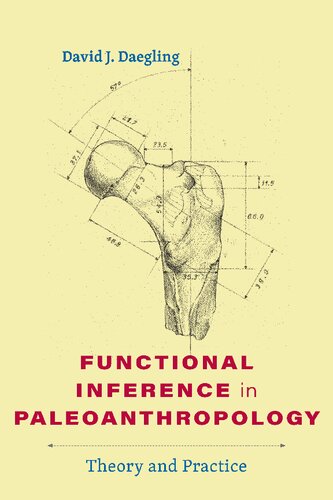

Most ebook files are in PDF format, so you can easily read them using various software such as Foxit Reader or directly on the Google Chrome browser.
Some ebook files are released by publishers in other formats such as .awz, .mobi, .epub, .fb2, etc. You may need to install specific software to read these formats on mobile/PC, such as Calibre.
Please read the tutorial at this link: https://ebookbell.com/faq
We offer FREE conversion to the popular formats you request; however, this may take some time. Therefore, right after payment, please email us, and we will try to provide the service as quickly as possible.
For some exceptional file formats or broken links (if any), please refrain from opening any disputes. Instead, email us first, and we will try to assist within a maximum of 6 hours.
EbookBell Team

5.0
48 reviewsIn this deep examination of functional morphology, a renowned paleoanthropologist offers a new way to investigate human evolution through the fossil record.
It is common for two functional anatomists to examine the exact same fossil material, yet argue over its evolutionary significance. How can this be?
Traditionally, paleoanthropology has interpreted hominin fossil morphology by first considering the ecological challenges hominins faced, then drawing adaptive inferences based on the idea that skeletal morphology is largely a reflection of paleoecology. In Functional Inference in Paleoanthropology, innovative paleoanthropologist David J. Daegling suggests that researchers can resolve dichotomous interpretations of the fossil record by instead focusing on the biology and development of the bones themselves―such as measurable responses to deformations, stresses, and damage. Critically exploring how scientists probe and interpret fossil morphology for behavioral and adaptive inferences, Daegling makes the case that an intelligible science of functional morphology in the fossil record is impossible without the inclusion of this mechanobiological perspective.
Drawing on historical examples from long-standing debates on the emergence of bipedality and the dietary shifts that facilitated the emergence of the hominin clade, Daegling traces the disjunctions between theoretical principles of comparative morphology and methodological practice in the paleontological context of human evolution. Sharing rich findings from recent decades of research in skeletal biomechanics, Functional Inference in Paleoanthropology examines how bone adapts over the lifespan, what environmental factors influence its quality, and how developmental constraints limit the skeleton's adaptive potential over evolutionary time.